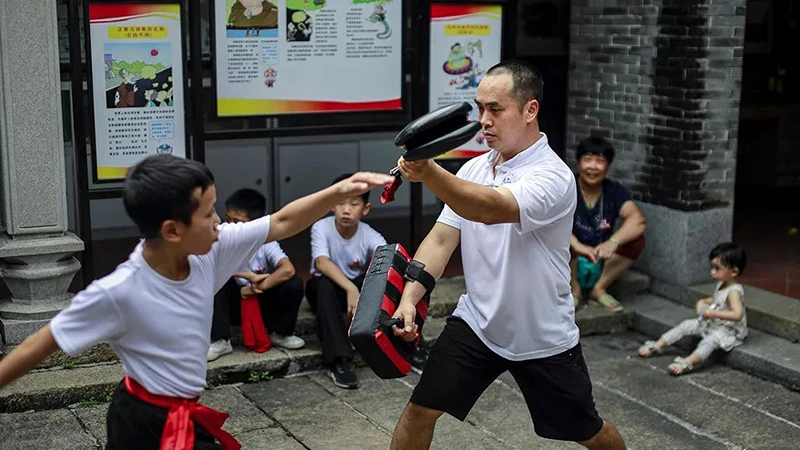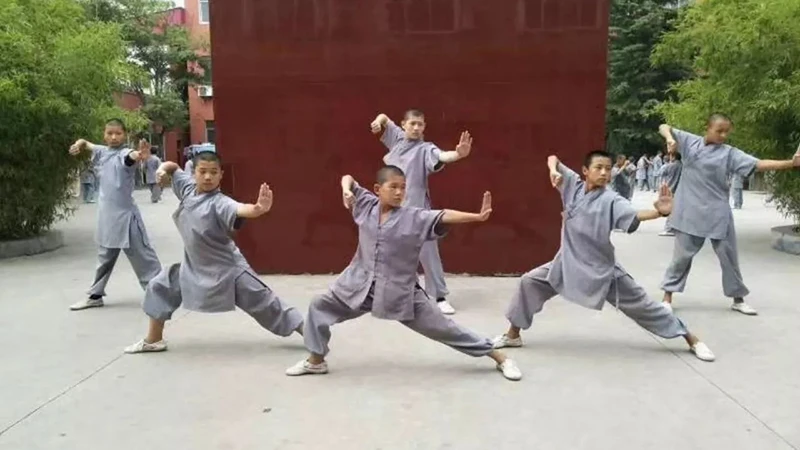Martial arts, often synonymous with grace, power, and discipline, carry with them centuries of tradition and cultural identity. In a small, northern corner of Jiangxi Province, within the historic Tian Village (田村), this tradition has deep roots. However, much like many other cultural practices in China, this once-flourishing martial arts scene is quietly fading into obscurity.
Far from the urban arenas of modern mixed martial arts (MMA), Tian Village offers a glimpse into an ancient world of tradition, discipline, and a way of life that is slowly disappearing.
The Martial Arts in Tian Village
Tian Village, a small Hakka settlement, has long been known for its martial arts prowess. For generations, the village produced formidable fighters who not only strengthened their own bodies but also used their skills to protect the local community from external threats. Martial arts weren’t just a hobby or profession in Tian Village; they were a necessary way of life.
The martial tradition in Tian Village dates back over a thousand years. The local monastery, Qizhen Temple, founded during the Han Dynasty, served as both a spiritual and martial training ground for the monks. These monks would practice martial arts not only for self-defense but also for mental and spiritual discipline. Their teachings spread throughout the village, becoming a core part of the community’s identity.
As the years passed, martial arts grew to represent more than just physical training. It became a symbol of local pride. Villagers would gather at temples and ancestral halls to practice together, competing to see who could master their skills and protect their home. It is said that during the Qing Dynasty, even when rebel forces tried to invade Tian Village, the local monks led a successful defense, proving the practical value of their martial prowess. These heroic tales were passed down through generations, embedding martial arts deeply into the village's fabric.
A Shadow of Its Former Glory
The golden era of martial arts in Tian Village started to wane in the latter half of the 20th century. As China's rapid industrialization brought economic opportunities to the younger generation, traditional practices like martial arts were sidelined. With the rise of factory jobs and the allure of big cities, the age-old traditions of martial discipline were replaced by a focus on material gain. The allure of practicing in a temple or on a hillside faded in comparison to the lure of a paycheck.
By the 1990s, the martial arts schools of Tian Village, once packed with eager young students, started to empty. A younger generation, hungry for the promises of modernity, viewed the long hours of disciplined training as impractical in a rapidly changing world. Many left the village altogether, seeking work in nearby urban centers, while those who stayed often lacked the interest or time to pursue martial arts as a serious discipline.
Today, while the legacy remains, it is more a whisper than a roar. The village still harbors a few remaining masters, many of whom learned their craft in the 1960s and 1970s. These aging practitioners now live quiet, rural lives, tending to their farms, with martial arts no longer central to daily life. For some, like Liu Fudong (刘福东), a man who has been practicing for over 30 years despite health setbacks, the passion remains strong. However, he is part of a shrinking minority.
Fudong and others like him continue to pass down their knowledge, but the number of students willing to learn is steadily dwindling. Martial arts in Tian Village now exist primarily as a symbolic link to the past, rather than an active practice or a source of local pride. The rich history of "hard style" and "soft style" martial arts, influenceed by the Shaolin and Wudang schools, remains largely untapped by the younger generation, who no longer see it as relevant to their lives.
The decline of martial arts in Tian Village reflects a broader issue faced by many rural communities in China today: how to balance tradition with the demands of modernity. While there are still efforts to keep martial arts alive, it is clear that without significant changes, this ancient practice may fade into oblivion within a generation.
What remains of Tian Village’s martial arts legacy is not just a collection of techniques and fighting styles; it is a testament to the values of discipline, community, and resilience that shaped the village for centuries. These values are embedded in the local culture, having helped define what it means to be part of this tight-knit, rural community.
However, as more young people leave for opportunities in cities, fewer are around to preserve these practices. While some, like Liu Fudong, continue to train and teach, the challenges of keeping this tradition alive are daunting. Without new blood and institutional support, the knowledge passed down through generations risks being lost forever.
A Legacy Worth Preserving
Ultimately, the martial arts tradition of Tian Village is more than just a set of physical skills. It is a living embodiment of the village’s history, values, and resilience. The principles of "harmony," "respect," and "law" that the martial artists of Tian Village uphold are as relevant today as they were centuries ago. In a world that often feels fragmented and chaotic, these values offer a sense of grounding, a reminder that strength is not just physical but also moral and communal.
The question now is whether this legacy can be preserved for future generations. Will the village's rich martial history be relegated to the pages of history books, or will it find new life in a modern world that, despite its advances, still hungers for connection to the past? The answer lies not just in the hands of a few dedicated masters but in the willingness of the entire community, both local and global, to recognize the value of this tradition and take steps to ensure its survival.




